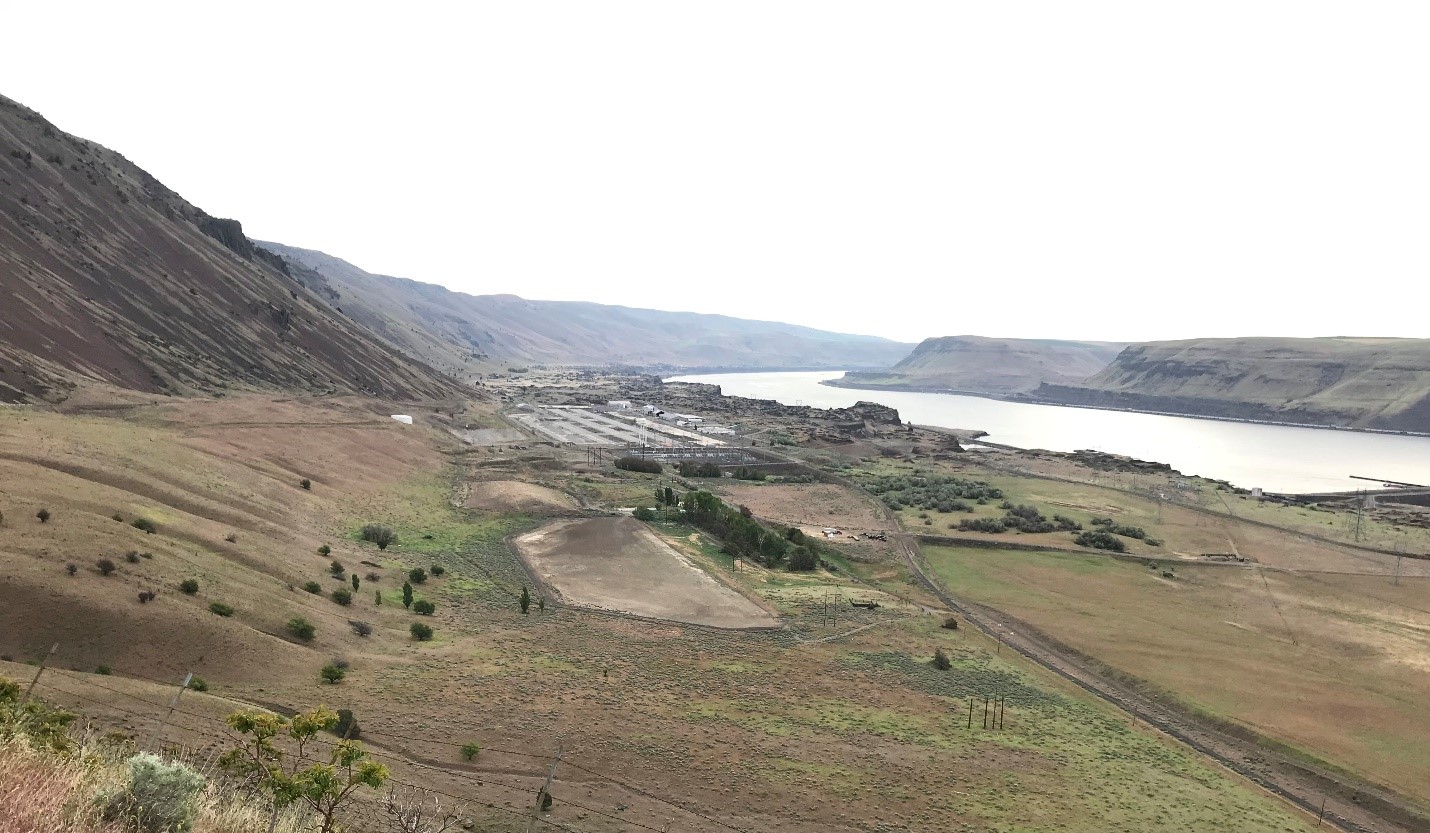
Former Columbia Gorge Aluminum smelter site near John Day Dam on the Columbia River
For many years, the former Columbia Gorge Aluminum smelter was a pillar of the local economy in Klickitat County, providing hundreds of family-wage jobs. It was common to have multiple generations of the same family working side-by-side at the smelter.
As with many of Washington’s aluminum smelters along the Columbia River, economic changes and increases in electric power rates in the early 2000s led to closure of the facility.
Three decades of heavy industrial activities left behind soil and groundwater contamination at the site. Addressing the risk posed by the site’s industrial legacy is a priority for Ecology.
Currently, we are working with landowner, NSC Smelter, LLC, and past smelter operator, Lockheed Martin Corporation, to investigate and clean up the wastes and contamination remaining there.
We are close to completing a Remedial Investigation, a study that measures the types of contamination across the site. Once we know the extent of contamination, our next step will be to conduct a Feasibility Study, which examines alternatives for cleaning it up.
When these studies are complete, we will ask for input on the findings and potential options for cleanup. We will consider tribal and public feedback when developing a cleanup plan for the entire site.
New cleanup plan targets proposed hydropower site
Even as our investigation and cleanup planning moves forward, the former smelter site is getting a closer look by developers who see potential to make use of its location, setting, and existing infrastructure.
The Goldendale Energy Storage Project is one such proposal
Free Flow Power Project 101, LLC proposes to construct a hydropower project adjacent to the Columbia River to take advantage of the site’s topography and proximity to the electric grid at nearby John Day Dam. The project would consist of two reservoirs at different elevations connected by a tunnel equipped with a reversible turbine.
The project would store energy by pumping water uphill during times of excess production from renewable energy sources (such as solar and wind), and then generate electricity by letting the water flow back downhill through the turbine during periods of peak demand for electricity.
The location for the proposed lower reservoir is in an area where smelter waste was historically disposed, at the west end of the aluminum plant. Our Industrial Program is working with the applicant to develop a cleanup plan for this portion of the site and coordinate it with the site-wide cleanup planning. This cleanup would occur before reservoir construction can begin.
Public involvement for cleanup at Goldendale Energy Storage site
We recently developed a Public Participation Plan specifically for cleanup at the proposed Goldendale Stored Energy site. It provides information on how we will engage with Tribes and the public as cleanup progresses for that part of the project’s proposed footprint.
We will ask for input before making any final decisions on the cleanup plan for the proposed Goldendale Stored Energy project site.
State environmental review underway
Currently, we're also preparing an Environmental Impact Statement (EIS) for the overall Goldendale Energy Storage Project. The EIS examines the possible significant and adverse impacts resulting from construction and operation of the proposed hydropower project. The Draft EIS will be available for public review and comment in early June. You can learn more about the EIS on our Goldendale Energy Storage project page.
To build the proposed energy project, the applicant will also need to get other state and federal permits and approvals beyond just cleaning up the site. The project must secure permits from the Federal Energy Regulatory Commission and others before proceeding.
Redevelopment potential site wide
Beyond the proposed energy project, the owner of the former smelter site is continuing to market the rest of the property for other projects, and it is likely that other redevelopment proposals will emerge.
We remain committed to working with the owner, applicants, and the public to put this site back to productive economic use.
An important first step is to ensure that any future development addresses risks to people and the environment posed by legacy contamination at the site. It is also important for us to ensure cleanup activities for specific redevelopment projects are coordinated with cleanup planning across the site.
We are confident that with careful planning and consideration of public input this property may once again play a key role in the economic vitality of Klickitat County for generations to come.

